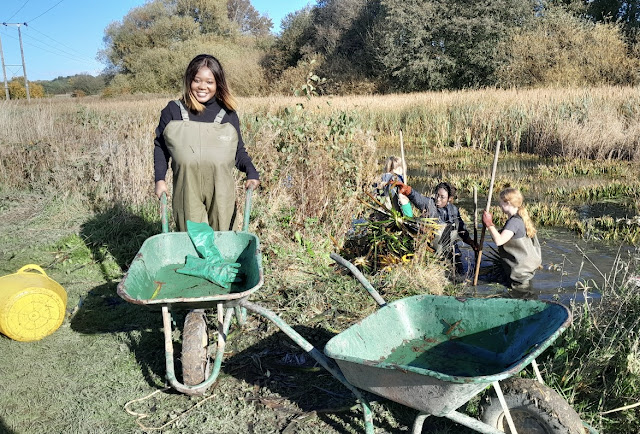Exploring the Role of Community Action, Invasive Species Management, and Unexpected Encounters with Nature in Advancing the UN Sustainable Development Goals
From Brambles to Biodiversity: A Volunteer’s Journey into the Hidden Wonders of Ecosystem Restoration
Greetings everyone, my name is Sofonie Dala, I’m a sustainability impact volunteer. Welcome to this sustainable platform featuring real non-fiction stories that illuminate the power of community action, environmental stewardship, and ecological awareness.
Today, I want to share one of my recent journeys as a volunteer with The Conservation Volunteers (TCV)—a grassroots experience that reflects the intricate connections between biodiversity, ecological health, and sustainable living.
Volunteering at Boothferry Golf Club – A Hands-on Experience
In May, I was honored to volunteer with TCV at Boothferry Golf Club, engaging in essential environmental restoration tasks. Our work involved:
Cutting invasive species, particularly brambles, which threaten native biodiversity by outcompeting local flora.
Tending to young trees previously planted as part of reforestation efforts.
Conducting maintenance, ensuring that the ecological balance and long-term health of this green space are preserved.
This experience aligns strongly with SDG 15: Life on Land, as it enhances forest conservation, promotes native species, and strengthens ecosystems.
A Surprising Encounter – The Bird Cherry Ermine Moth
While performing maintenance on one of the planted trees, something caught my attention—what initially appeared to be a clump of tangled web or tree debris turned out to be alive. Upon closer inspection, I discovered a mass of tiny, wriggling larvae enveloped in a communal web.
These were no ordinary insects—they were Bird Cherry Ermine Moths (Yponomeuta evonymella), a species of moth native to Europe. Their silken nests cloak entire branches of the bird cherry tree, which is their primary host plant.
Scientifically speaking:
These moths are defoliators—the caterpillars feed voraciously on the leaves of bird cherry trees.
Although visually alarming, their presence usually does not kill the host tree. It is an example of a resilience mechanism in ecosystems.
Their lifecycle illustrates the complex interplay between species and habitats, showing how each organism—no matter how small—has a defined role in biodiversity.
This moment of discovery reminded me of SDG 13: Climate Action, where observing even the smallest changes in ecosystems can give us clues about climate shifts, species behavior, and habitat health.
Reflecting on Biodiversity and Collaboration
As we work to restore ecosystems and fight the spread of invasive species, encounters like these reaffirm the importance of scientific observation and citizen engagement. My work with TCV exemplifies SDG 17: Partnerships for the Goals—when communities, NGOs, and volunteers collaborate, we build more resilient and informed societies.
Conclusion
The Bird Cherry Ermine Moth may be small, but it is a powerful reminder that biodiversity matters at every level. Sustainability is not just about large-scale policy changes—it’s about the choices we make in our gardens, parks, and forests. By caring for our local environments and staying curious about the natural world, we contribute meaningfully to a global mission.
Let us continue to observe, restore, and protect. Because every tree, every species, and every act of service counts.
Thank you.


































Comments
Post a Comment
Please leave your thoughts